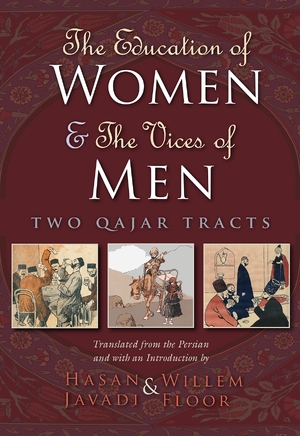"Farzaneh’s illuminating research is useful for women’s rights activists, anthropologists, sociologists, and political scientists who seek to acquire an in-depth understanding of the largely untold stories of and myriad roles played by Iranian women during the Iran-Iraq War and in Iran’s patriarchal system."—Middle East Journal
"A pioneering work. We here in the US hear extremely little about the Iran-Iraq war and what was going on on the ground in Iran during those eight horrible, long years."—Mary Elaine Hegland, author of Days of Revolution: Political Unrest in an Iranian Village
"This is a scrupulously researched book on an important subject. By making women and gender its central concern, it offers an original and necessary new perspective on the Iran-Iraq war."—Stephanie Cronin, University of Oxford
"This book is rich in detail and accessible…. Farzaneh captures the essence of life for Iranian women in the eight long years they fought in it in different capacities."—Journal of Middle East Womens Studies
"An original and groundbreaking investigation of the many ways Iranian women were vital and central actors in, and unfortunate victims of, the Iran-Iraq War."—Jasamin Rostam-Kolayi, California State University, Fullerton
"The military history and political history of the 1980-88 war, and even Iranian art and graphic design of the era, are well studied, but Farzaneh, a history professor at Northeastern Illinois University and a volunteer during the war, contributes a missing piece with an in-depth and well-written study of women."—Middle East Forum
"Farzaneh has given us an engrossing study of the role of Iranian women in the Iran-Iraq war—active role not only in the home front but also at the actual war front. This is a fascinating look into the popular culture of revolutionary Iran."—Ervand Abrahamian, Baruch College, City University of New York
"For the first time, non-Persian speakers can dive deeply into the rich world of Persian-language memoirs written by women."—International Journal of Middle East Studies
"One of the many contributions of this volume is to move away from the generally sui gener is manner in which Iranian women are often portrayed and treated in the literature, as being some kind of passive victim in the Middle Eastern context and, more specifically, in Iran. Instead, it shows that women are much more socio-politically confident and actively engaged both in terms of challenging their gender roles and protecting their country and culture."—British Journal of Middle Eastern Studies
"Farzaneh passionately argues that women contributed much more to Iran’s efforts in the 1980–89 war against Iraq than was recognized at the time or since. Recommended."—Choice
Description
Eighteen months after Iran’s Islamic Revolution in 1979, hundreds of thousands of the country’s women participated in the Iran-Iraq War (1980–88) in a variety of capacities. Iran was divided into women of conservative religious backgrounds who supported the revolution and accepted some of the theocratic regime’s depictions of gender roles, and liberal women more active in civil society before the revolution who challenged the state’s male-dominated gender bias. However, both groups were integral to the war effort, serving as journalists, paramedics, combatants, intelligence officers, medical instructors, and propagandists. Behind the frontlines, women were drivers, surgeons, fundraisers, and community organizers. The war provided women of all social classes the opportunity to assert their role in society, and in doing so, they refused to be marginalized.
Despite their significant contributions, women are largely absent from studies on the war. Drawing upon primary sources such as memoirs, wills, interviews, print media coverage, and oral histories, Farzaneh chronicles in copious detail women’s participation on the battlefield, in the household, and everywhere in between.
About the Author
Mateo Mohammad Farzaneh is associate professor of history at Northeastern Illinois University. He is the author of The Iranian Constitutional Revolution and the Clerical Leadership of Khurasani.
Related Interest
Series: Gender, Culture, and Politics in the Middle East
6 x 9, 500 pages, 16 color, 5 black and white illustrations, 4 maps
February 2021




